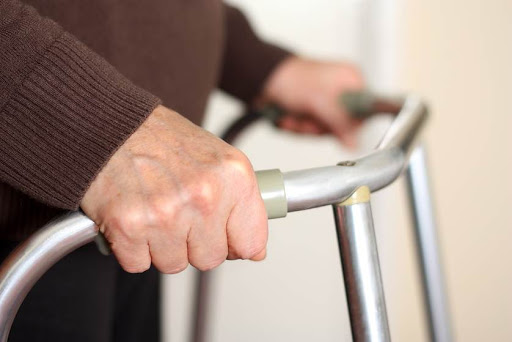For many adults, walking and being mobile can be difficult. This is why they rely on walkers to help them move around safely. This will also allow them to become more independent even with mobility issues.
However, used and handled incorrectly, walkers may also be a cause of accidents, slips, and injuries.

This is why it’s important to know how yo use a walker comfortably, and of course, safely.
So, whether you’re new to using a walker or have been using it for a while, it’s important to go over these tips to learn how to use walkers more correctly. Please keep in mind that using a walker correctly will takes some time.
1. Adjust the walker to the right height.
Make sure it’s level to your height. This will help reduce on your shoulders and back as you walk.
You may have your doctor, physical therapist, caregiver, or other health professional help you adjust it. However, if you want to adjust it on your own, you may follow this guide:
- Relax your shoulders and put your hands on the grips. You elbows should only bend slightly at an angle you are comfortable with, usually about 15 degrees.
- With arms hanging relaxed at the sides, the top of the walker must line up with the crease on the inside of your wrists.
2. Safely walk using your walker.
Learn the correct movements of using a walker to increase your mobility and independence.
- Put the walker at arm’s length in front of you. Take the weight off of your hands and gently push the walker forward.
- Use the handles of the walker for balance as you step forward with the weaker leg to the middle of the walker. Don’t step all the way to the front.
- If both legs are of equal strength, then either leg goes first.
- Push straight down on the walker handles as you step the other leg forward until it’s even with the first leg.
- Repeat this as you move from one point to another.
- Safety tip: Avoid pushing forward because this may cause the walker to slide unexpectedly. Pushing down helps keep it steady and firmly on the ground or floor.
3. Sit or stand safely using a walker.
Aside from walking, it’s also important to learn how to sit and stand while using a walker. This helps prevent slips and falls.
The thing is, you may not use the walker to help you stand or sit, as this might move or slide off. Instead, use the arms of a stable chair to do so.
For sitting:
- Back up to a chair until your legs touch the edge of the seat.
- Use your hands to feel behind you the seat or the arms of the chair.
- Slowly lover into the chair using the chair arms for support, if you need to.
For standing up:
- Hold the chair’s arms and push up using your arms.
- After standing up, wait until you get steady and hold the walker’s handles.
- Safety tip: Avoid pulling on the walker or tilting it to stand up.
4. Remember these do’s and don’ts.
- DO stay upright to protect your back
- DON’T hunch over
- DO look straight ahead when walking
- DO always step into the walker instead of walking behind it
- If you want to change direction, DO it slowly
- DON’T push the walker so far in front of you
- DON’T put the handles too high
- DON’T use it to climb stairs, even if it’s only a few steps
Recent Comments